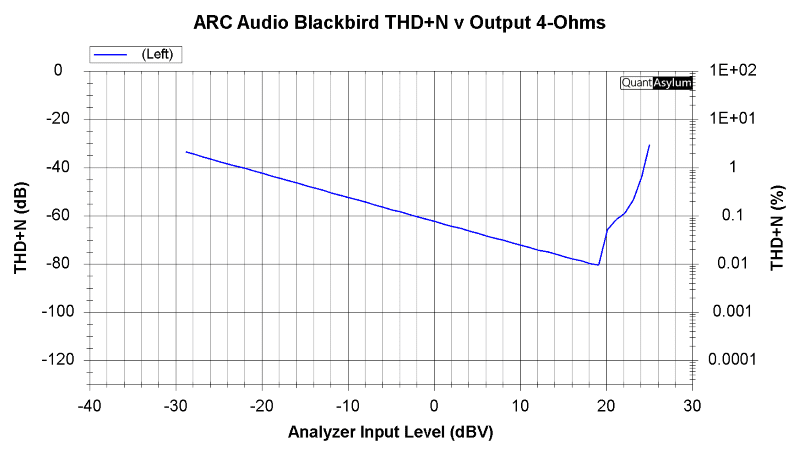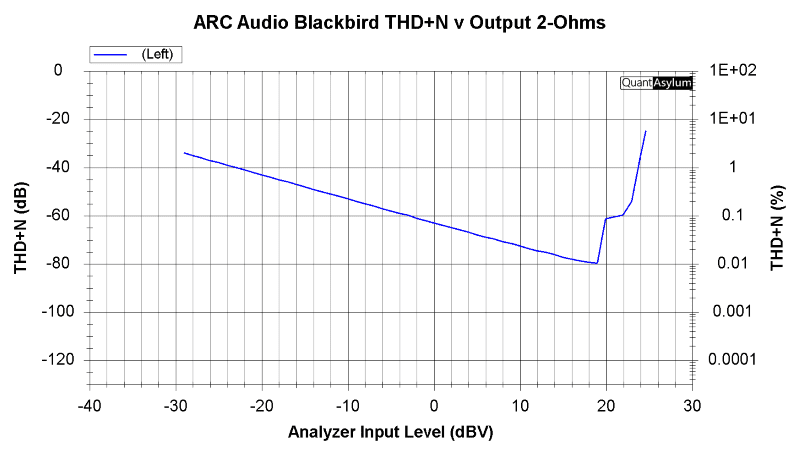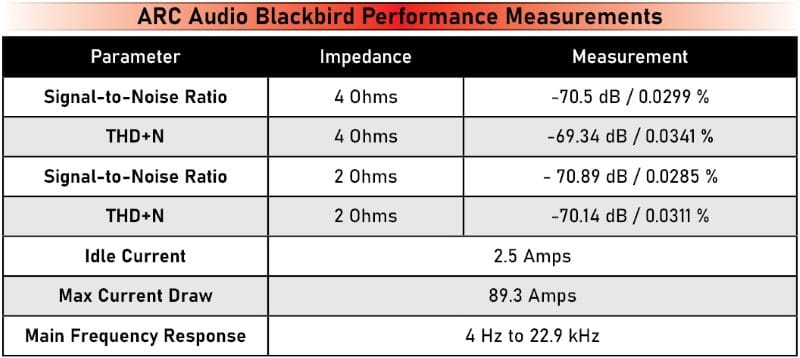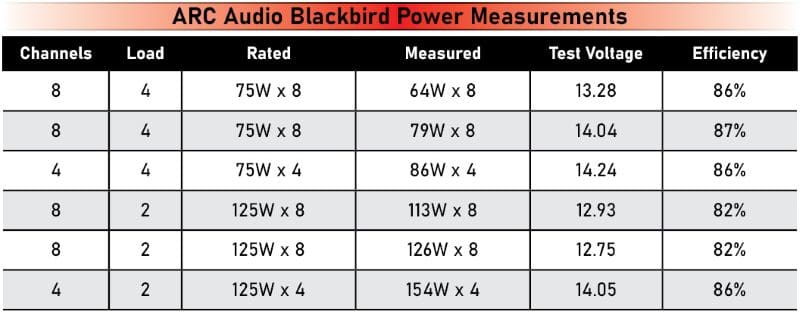Since I first reviewed an ARC Audio amplifier back in 2004, I knew there was something different about this company. It only took a few reviews to recognize the pattern, and frankly, I’ve been spoiled by every opportunity to audition one of their amps ever since. Call it clarity, transparency or neutrality; all of ARC Audio’s amps have offered as invisible a sonic signature as I’ve heard at any price. Match that accuracy with what could be described as impressive dynamics, and their products have served as my benchmark reference for over 15 years.
For this review, I have one of the new ARC Audio Blackbird eight-channel DSP-equipped amplifiers in the BestCarAudio.com lab. Will this amp enable ARC Audio to continue this trend of delivering stunning sonic performance as well as exceptional features? Let’s find out.
Basic Features of the ARC Audio Blackbird Amplifier
The Blackbird amp shares the same footprint as the PS8-50 amplifier it replaces at 10.35 by 6 by 2 inches. I have a PS8-50 in my lab that simultaneously powers the two fully active audio systems on my main computer and the one I use for testing products on the other side of the room. The PS8-50 was rated to produce 50 watts per channel into 4 ohms with all channels driven. The new Arc Audio Blackbird is rated to produce 75 watts of power from each of the eight channels into 4 ohms and an impressive 125 watts per channel when driving 2-ohm loads. Each pair of channels is bridgeable, so the amp can provide up to 250 watts of power to a 4-ohm subwoofer if you want. It is worth noting that these ratings are provided with all channels driven to full power simultaneously – not the elevated numbers some brands report when only a few channels are producing all the power they can. Likewise, these are continuous power numbers, not dynamic power measurements. We’ll test both the real and “application-inflated” numbers later when the amp is on the bench.
The second significant difference owners and purveyors of the PS8-50 will recognize is that the Blackbird has a 12-channel digital signal processor instead of eight channels. Your installer can route discrete signals to each of the eight built-in amplification channels and connect external amplifiers to the four preamp outputs on the amp’s front panel. Rumor is that ARC Audio will have a high-power amplifier in the same heatsink shortly to drive a subwoofer or two or three or four.
OK, now back to some similarities and features. The Blackbird has eight balanced differential RCA inputs that can accept up to 32 volts of audio signal. The input mixer tab in the software allows your installer to set the inputs to 0.5-, 2.0-, 8.0- and 32-volt ranges. As such, very few applications will require any sort of line-level converter. The amp does not include low-impedance resistors, so your installer might need to add a few to the output of a Class D factory-installed amp if that’s what’s driving the Blackbird. There are some pre-packaged solutions with built-in capacitors that work great for this. Given how hot these resistors can get at high volumes, it’s best to keep them out of the amp.
From there, the technician can easily route any amount of signal from any input to any of the 12 sub-channels or directly to the 12 outputs. It’s worth noting that none of the channels is paired, and the mixer is 100% flexible in this regard. If your installer wants the front and rear left inputs on channels 1 and 2, go for it!
The processor also treats the SP/DIF input as a set of channels labeled 9 and 10. If you upgrade the amp with the optional BTD Bluetooth module, it uses those same inputs – so you’ll have to choose between those options. ARC Audio offers an optional cable that will plug into the RJ45 jack for the BTM that will accept 192-kHz, 24-bit coaxial digital signals in lieu of the SP/DIF connection.
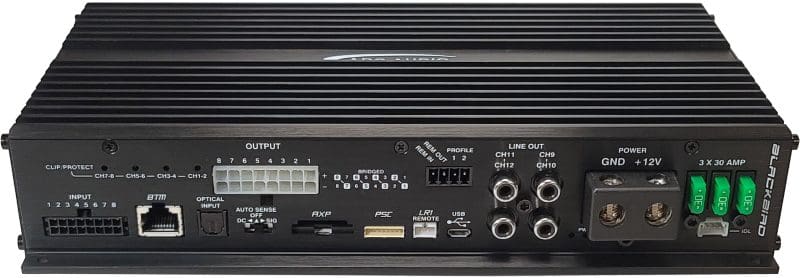
The Blackbird software is similar to what ARC Audio fans and retailers will recognize from the PS8-Pro platform (PS8-Pro, PS8-50 and IPS-8), the PSM and the original PS8, but with even more channels and many more features and functions. Thankfully, the software maintains its “one function at a time” layout with function-based tabs that match how signal processors are configured in a vehicle. Your installer can configure the inputs, route signals and adjust the mixer, set crossovers and delays, and work on the equalization and levels one screen at a time. I much prefer this to layouts where many features are on a single screen, and your installer is forced to work channel by channel.
In terms of signal processing features on the inputs, each of the eight input channels has a 12-band parametric equalizer. Any of the channels can be assigned to equalize the signal, apply a first- or second-order all-pass filter, or apply a high- or low-shelf filter. Each channel has an adjustable delay of up to 11.02 milliseconds in 0.02-millisecond steps to undo time alignment. Finally, the polarity can also be inverted on any channel in the software.
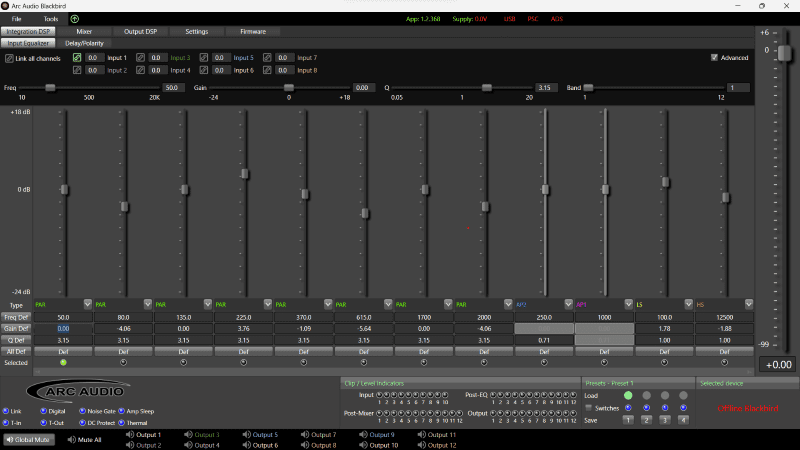
The design engineers at ARC Audio have included a sub-mixer in the Blackbird software if you want to do some creative signal routing or take advantage of some of the built-in signal processing features. In particular, they have included a SuperBass feature that we’ll experiment with in the listening room. The built-in upmixer for multichannel digital signals is also available and configurable through the Mixer Assist panel.
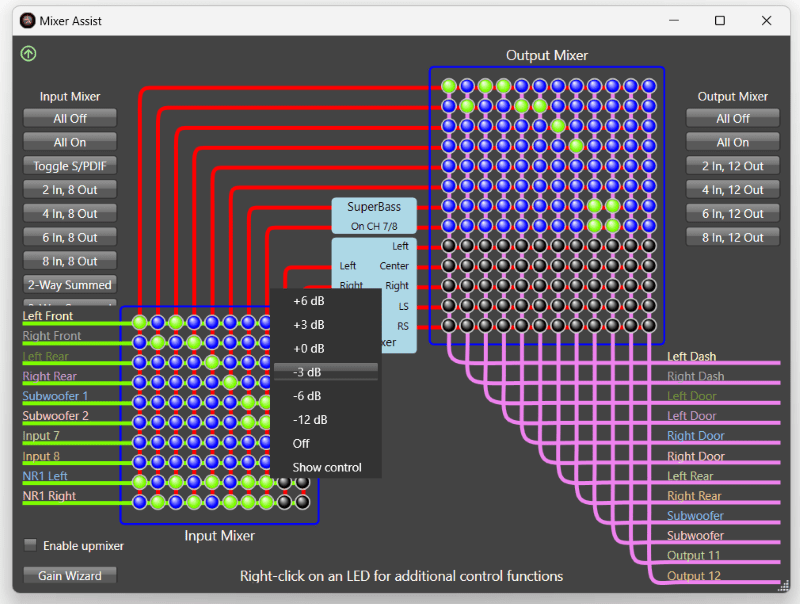
Each of the 12 output channels has an incredibly detailed set of adjustments. The crossovers can be set to Butterworth, Linkwitz-Riley, Bessel, Variable-Q or Chebychev responses with slopes up to 48 dB per octave. The filter frequencies are adjustable from 10 to 20,000 hertz in 1-hertz steps. Pairs of channels can be linked should your installer wish to speed up the configuration process.
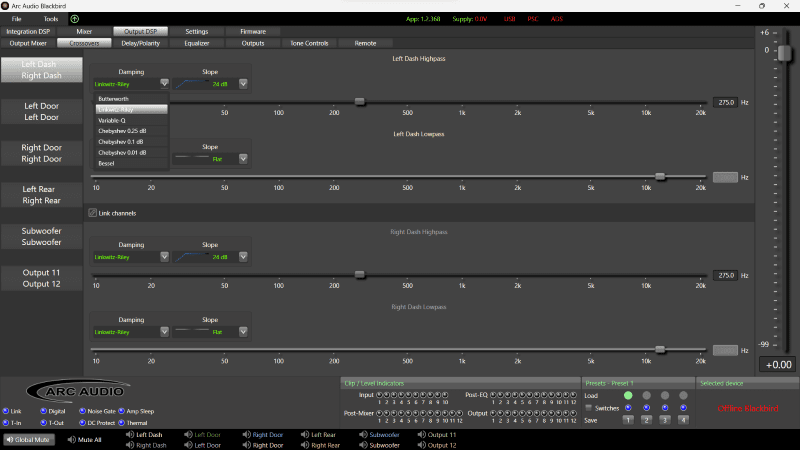
The delay panel handles polarity inversion on the outputs via a radio button, and delays can be set up to 30 milliseconds in 0.02-millisecond steps. Channels can be put into groups to clone adjustments quickly. For example, if your installer aligns the output of the left tweeter, midrange and woofer, then wants to add delay to all three at once, he can put them in the same group from the pull-down menu and move the slider. The same amount of delay will be added or subtracted from each channel.
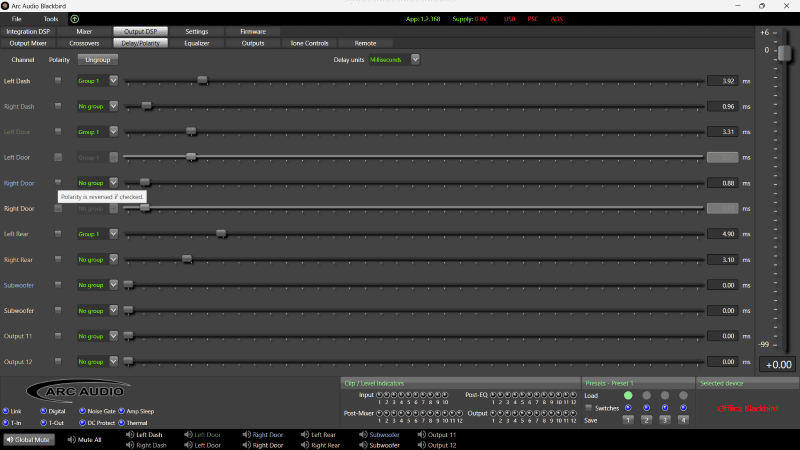
Each of the 12 output channels has 37 bands of fully parametric equalization. The center frequencies are adjustable from 10 hertz to 20 kHz, the Q from 0.05 to 20, and the gain from -24 to +18 in impressively fine 0.01-dB steps. Any of the bands can also be assigned the task of applying a first- or second-order all-pass filter or act as a high- or low-shelf filter. If your installer has used the EQ in its graphic equalization mode, they can adjust multiple channels simultaneously. If the technician calibrating your systems wants to use the arrow keys during the equalizer adjustment process, they can select a slider, then use the up and down arrows to adjust the level and the left and right arrows to move to an adjacent band. In short, it works just as they’d want and expect.
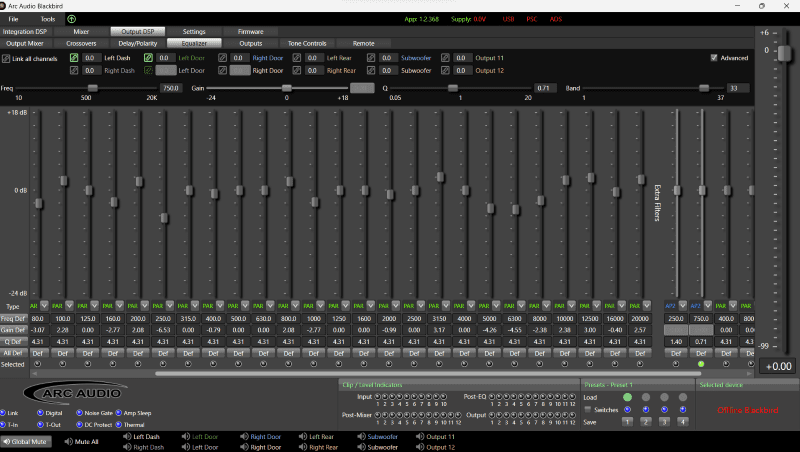
The output panel offers level adjustment for each of the 12 channels with 0.01-dB resolution if the values are entered manually or 0.1 dB if you use the slider. Once again, the panel includes grouping options if global adjustments are required. In addition, fader and balance adjustments and channel assignments work in conjunction with the optional iDatalink Maestro interface. Also, part of the Maestro integration is a tone control tab that allows your installer to assign the function of a factory source unit’s tone adjustments. The settings for the SuperBass function are also on this tab.
The settings tab allows your installer to label each input and output channel and set turn-on and -off delays for the amp. They can configure automatic preset switching when the amp detects a digital signal and fine-tune the navigation ducking feature. Navigation ducking mixes prompts into the audio stream automatically.
As I mentioned, the ARC Audio lads have a penchant for doing things a little differently. The Blackbird includes the same adjustable Class D switching frequency adjustment feature that I highlighted in the review of the ARC 1000.4 DSP amplifier a few years ago. Your installer can select the switching frequency from 11 preset options to ensure that RF noise won’t affect AM or FM reception. Nobody else in the car audio industry offers this feature.
A few last notes on the software interface. ARC Audio includes a level meter for each of the 10 inputs and the 12 outputs. There are also meters for the post-mixer and post-EQ stages so the technician configuring the amplifier can avoid clipping at any point in the calibration process. That information is replicated at the bottom of the main software window in the form of indicators for each channel that illuminate in green, yellow or red.
A response plot chart will also show the function of crossovers, equalization and output level adjustments. Your installer can turn on phase response graphs if they are setting all-pass filters.
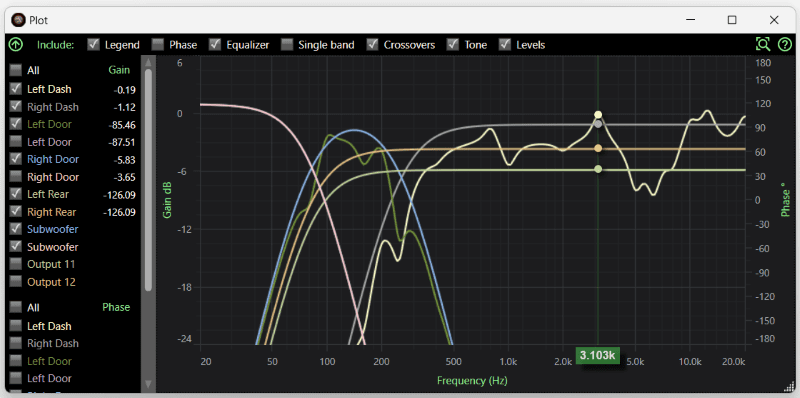
If you’re using Room EQ Wizard to make in-car acoustic response measurements, you can import an equalizer settings file into the software and assign it to the EQ channels on the band of your choice. One of the vehicles with the most accurate imaging I’ve ever heard was configured using REW filters and an ARC Audio PS8 digital signal processor. How accurate, you ask? I could hear the room ambiance in the navigation system’s voice prompts. Silly impressive!
ARC Audio also built a signal generator into their software. Your installer can switch inputs 9 and 10 between digital, Bluetooth and this generator to assist in setting up the system. The generator can create band-limited or full-range pink noise, sine waves, sweeps or pulses.
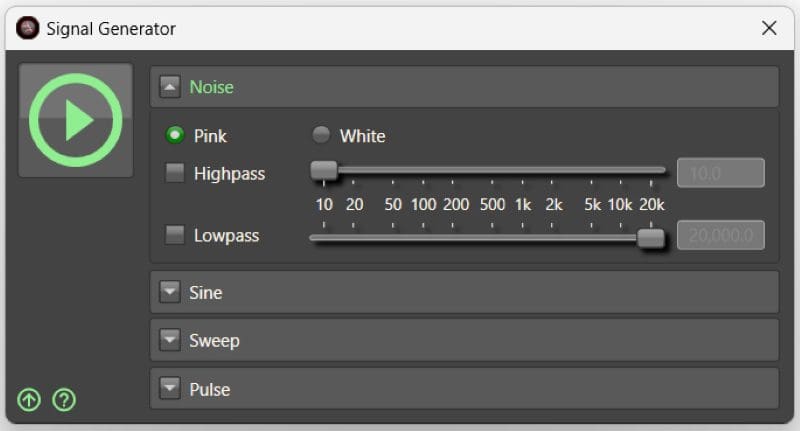
Physical Features of the ARC Audio Blackbird Amplifier
All connections for the Blackbird are made along the front edge of the amp. There’s a large terminal block with Phillips-head set screws for four-AWG power and ground terminals. Three 30-amp mini fuses are included to protect the amp in case it’s wired incorrectly. The speaker outputs are on a medium-sized Molex connector in the center of the amp, and the RCA preamp inputs are on a smaller connector on the left. ARC Audio includes another input plug with wire pigtails if the input signals are from a factory-installed source unit or amplifier.
There are four RCA preamp outputs for channels 9 through 12. A four-position Phoenix connector handles the remote turn-on input and output connections and wired connections that allow you to select from any of the four system configuration presets. A micro-USB port is provided for connectivity to your installer’s laptop. There are ports for the optional PSC remote control and the LRC remote level control. A port for the Maestro data input is under the power connection block. There’s an RJ45 connector for the Bluetooth module and a port for the digital optical SP/DIF connection. A three-position switch is included to let your installer select the turn-on mode from the remote wire, DC detection or audio signal detection. There’s a port for an optional Wi-Fi transceiver module called the AXP. Lastly, four LEDs indicate when the amp is on and when any of the channel pairs are clipping or have gone into protection.

Amplifier Physical Design and Component Inspection
Like all ARC Audio products, the attention to detail in ensuring that the Blackbird will operate reliably wasn’t overlooked. The power supply switching devices are clamped to the back wall of the heatsink with a small fan mounted in the middle of the panel. Outside the amp, the rear panel of the finned heatsink is covered with a steel plate that forces air from the fan along the cooling fins to extract as much heat as possible. Air enters from the side panels of the amp. Of course, the microcontroller in the amplifier monitors the temperature of both the heatsink and the power supply transformer and adjusts the fan speed as needed. Very few companies put this much effort into ensuring that their amplifiers manage heat properly.
Removing the bottom panel of the amp reveals the DSP circuit board. The first thing you’ll notice is that the artwork of Mt. McKinley has been screened around the components. McKinley was the code name for the PS8-50 project on which the Blackbird is based and is a tribute to Bill McKinley. Bill was one of the first sales representatives for ARC Audio and passed away in January 2017. There is also a tribute to Erik Limanto, who passed away in April 2022. Erik had been with ARC Audio since its inception as an authorized distributor in Indonesia as CEO of P.T. Intersis.
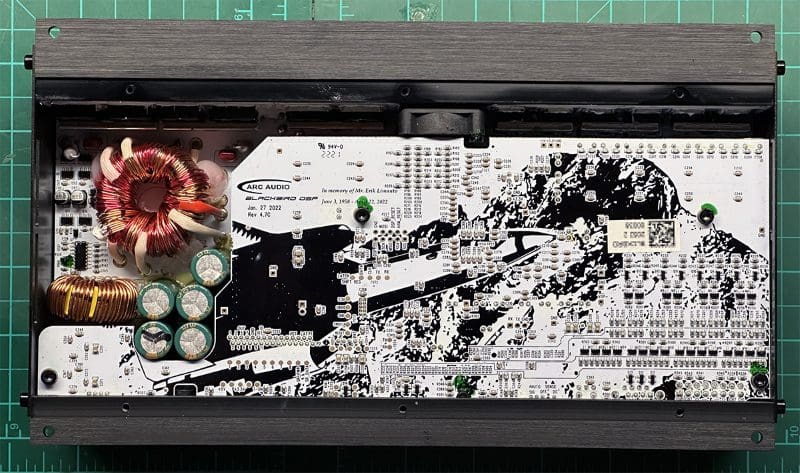
As would be expected from a premium product, the board layout is neat and tidy, with surface-mount components populating this rear panel. Flipping the board over reveals the 32-bit Analog Devices SigmaDSP digital signal processor, the AKM 32-bit 768-kHz-compatible A/D and dual D/A converters, a Microchip ARM Cortex-M0+ microcontroller along with a slew of Texas Instrument Dual-Channel Low-Noise Op-Amps. Of course, dozens of associated surface-mount resistors, capacitors and voltage regulation components are on the board.
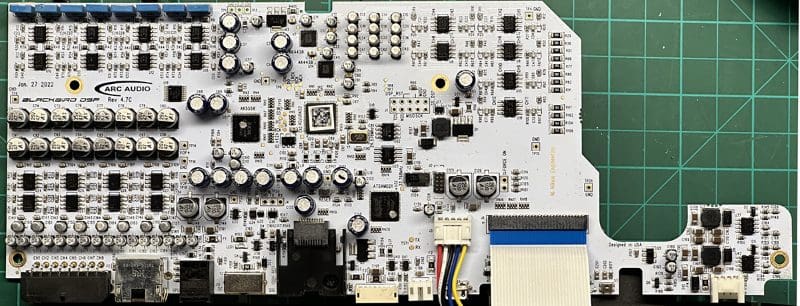
The main amplifier board is attached to the top of the heatsink. From the four-AWG input terminal block, power flows through an inductor and then to a bank of five 2,700-microfarad, 16-volt filtering caps before heading to the switching devices and a multi-tap transformer. The rail voltages are filtered and bolstered by four 2,200-microfarad, 50-volt caps. A finned cast aluminum heatsink in the center of the board clamps down the surface-mount output switching devices. Eight shielded inductors and eight high-quality filter caps smooth the Class D switched waveform to deliver a clean audio signal. A five-pin connector provides power from the main board to the DSP board, and audio signals are passed back and forth by a flexible PCB ribbon jumper. As expected, all large components are glued in place to ensure that they won’t rattle loose as your vehicle travels down the road. In short, it’s a very organized and compact design. The case is rock solid with no panels or connections that might buzz or rattle.
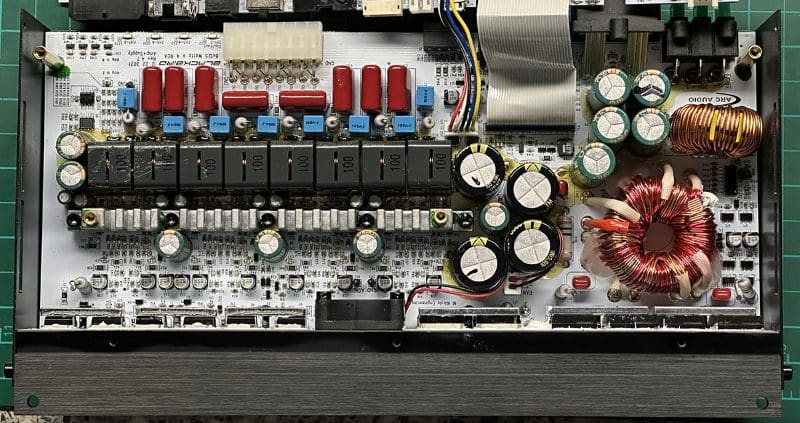
An important factor in the purchase of any new amplifier is support for the voltage drops that occur in vehicles with Stop/Start systems. The engineers at ARC Audio have designed the power supply in the Blackbird to remain stable with dips down to about 6 volts. Speaking of the power supply, the engineers at ARC Audio included an Auto Power Down feature that can be enabled in the Settings menu. When the amp doesn’t detect any signal on the input for a period of about 10 seconds, it shuts down the Class D modulator IC. This cuts idle current in half. The amp can resume playback within 700 milliseconds when the audio signal returns. This is sort of like a noise gate, but was intended to reduce current draw rather than mask noise. I checked this on the bench. The idle current is typically 2.5 amps. When the amp goes to sleep, this drops to 1.3 amps.
ARC Audio Blackbird Listening Audition
I set the Blackbird up in my listening room and connected it to one of my modified DRZ9255 source units, a pair of high-quality bookshelf speakers and a 12-inch audiophile-grade car audio subwoofer in a sealed cabinet. I set the crossovers between the speakers and the sub at 80 hertz using a fourth-order Linkwitz-Riley filter. I then adjusted the output of the main speakers and the subwoofer to match the acoustic response curve of my listening room, cued up some music and sat back to enjoy.
I started with “I Can See Clearly Now” by the Holly Cole Trio. The upright bass that leads this song was beautifully defined through the woofers and subwoofer. There was no tubbiness, unwanted warmth or anything that would have detracted from the realism of the reproduction. The piano that comes in part way into the song was equally realistic – something that’s difficult to achieve. Finally, Cole’s voice just sounded right. There was no emphasis anywhere. She wasn’t nasally, warm, forward or bright – just realistic.
I listened to “Yellow Flicker Beat” by Lorde next. This is one of my favorite songs, though I can’t explain why. The track starts with Lorde humming. Through the Blackbird, it was easy to hear the slight wavering in pitch and frequency – something other amps have masked to varying levels.
“Fast Car” by Tracy Chapman started playing next. I was making notes as this was playing, but the percussion’s perceived dynamics caught my attention. There was a solid visceral impact rather than a thud, bump or boomf that I’ve heard from other products. Played loudly, this is what makes listeners wince from what would be called “kick” or “attack.” In reality, it’s clarity and a lack of distortion that make each sound stand out clearly. We’ll have to see if the numbers on the bench testing support this hypothesis.
Next was “Spanish Grease” by Willie Bobo. I’ve listened to this track on almost every amplifier I’ve auditioned for the last decade or so. There’s a point in the middle and at the end of the song where the word “get” is repeated. If your system is imaging well, the word will seem to circle the room. The closer it comes to the listening position, the better your system is imaging. With the Blackbird, the sound came to within about a foot of the listening position – nearly matching the capabilities of my ARC Audio SE2300 reference amplifier. Not bad for an amp that will fit under your seat and power an entire audio system.
Lastly, I wanted to give the amp a challenge power-wise, so I cued up “On the Floor” by Jennifer Lopez and Pitbull. Yes, I know, this track has been in many reviews lately, but I like the song, and it works well to challenge a subwoofer. The deep bass line centered at 24 Hz was reproduced with impressive output and detail. The low-frequency extension wasn’t just audible but impressively clear and detailed. Each note was nicely defined and mated with a snap in the upper bass and midrange to make the experience impressively dynamic and lively. The Blackbird didn’t quite have the same effortlessness as my ARC Audio X2 2500.1 reference amp, but man, it was close for an amplifier with one-tenth the power.
It can sometimes be difficult to distinguish between good and great amplifiers. In most cases, unless distortion is significant or it’s noisy, there are different levels of clarity or what’s perceived as dynamics. I’d rank the Blackbird up with the best of them in terms of quality. There’s always that last 2 or 3% of performance allocated to big high-bias Class AB amps like my SE2300. But for something that can be installed under a seat or in the corner of the trunk, the sonic performance of the Blackbird is stunning.
I experimented with the SuperBass feature before taking the amp to the lab. I predicted this would work like an AudioControl Epicenter or Wavtech BassRESTOR. I was wrong. It’s more like the Waves MaxxBass processor. The processing applies a high-pass filter to audio signals to reduce the work the speaker does, then modulates the midbass to make it sound as if there is a large subwoofer in the system. If you don’t have a subwoofer in your vehicle, this can significantly affect how much bass you’ll perceive from relatively small speakers. I’d call this a must-have if you use factory-installed speakers without a sub. That said, get a subwoofer; it’s always worth it!
Bench Testing the ARC Audio Blackbird
After listening, it was time to see whether what I heard would correspond with the measurements. I always start my testing with frequency response evaluation. I tested the Blackbird’s response into 2- and 4-ohm resistive loads and my reactive load simulator.
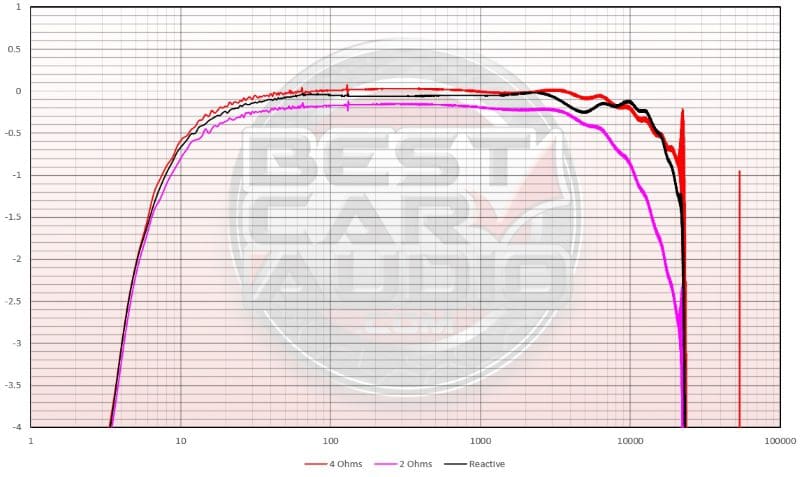
The impedance into my simulated reactive load showed a bandwidth of about 4 hertz to just shy of 23 kHz on the top end with no more than 0.25 dB of ripple anywhere that it matters. This is typical of a well-designed Class D amplifier.
I ran through my usual EQ response tests to verify that the signal processing worked as intended. No surprises here; it was flawless. Even the high-Q signal boost and cut hit the 10 dB and -10 dB marks perfectly. The crossovers overlapped with impressive precision.
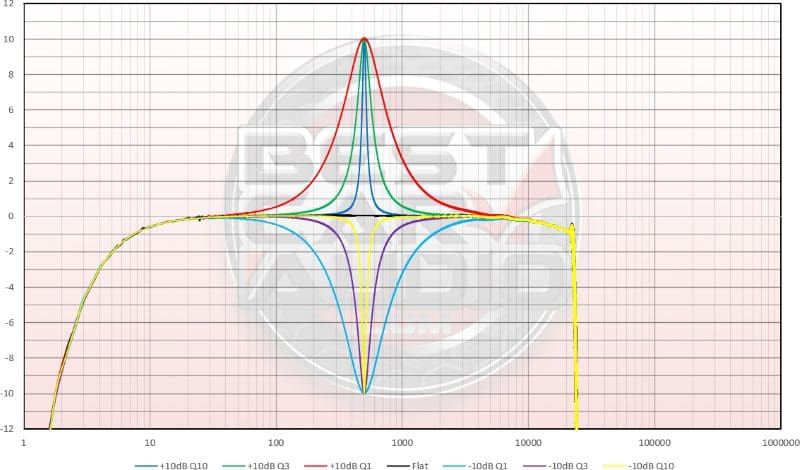
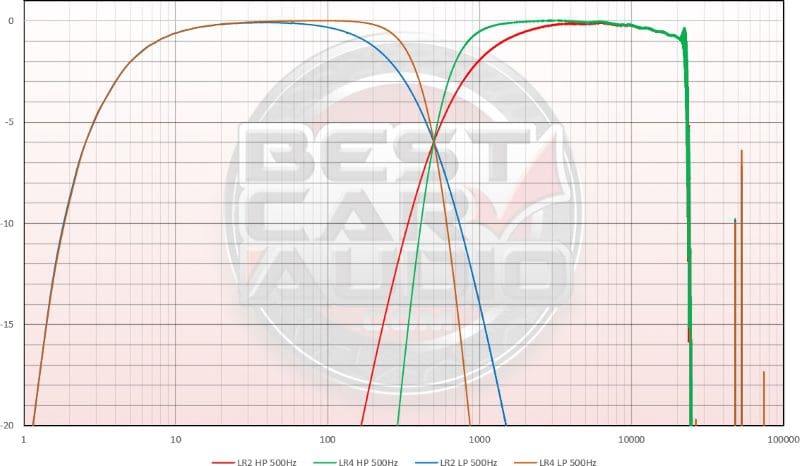
Up next, I started evaluating the distortion performance of the amp. I follow the CTA-2006-D standard for evaluating harmonic distortion and noise from 20 Hz to 20 kHz at an output of 1 watt into a 4-ohm load. Once again, the numbers were very good for a Class D amp with a signal-to-noise ratio of about -70 dB and harmonic distortion of 0.034% at the 2-volt level. The THD+N versus output graphs shown below follow the typical shape of an amplifier with complementary output devices. The minimum distortion was down around 0.01% at 19 dBV or 20 watts.
It was impressive that the Blackbird didn’t much care whether it was driving a 4- or 2-ohm load. Most amplifiers produce significantly more distortion when driving lower impedances. I can’t say that I’ve seen an amp that didn’t care before. Great, there goes my “story” about not loading amplifiers down to avoid distortion.
Next, I measured intermodulation distortion using the CCIF standard 19- and 20-kHz test. I adjusted the amplifier’s output to produce a 2-volt RMS waveform, then evaluated the product amplitude at 1 kHz and the side-band harmonics.
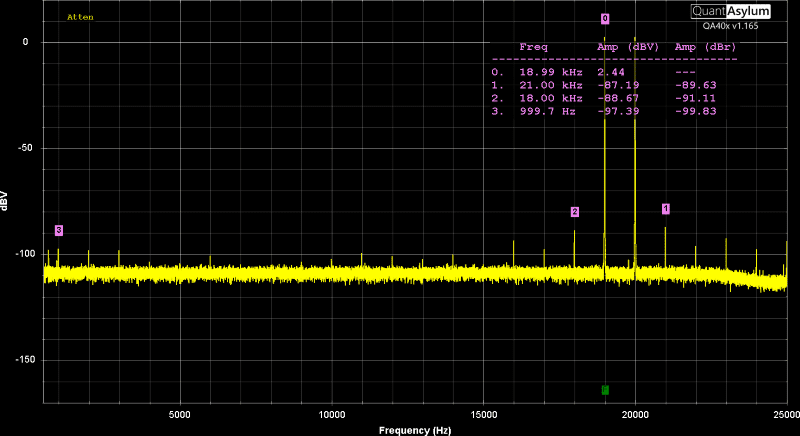
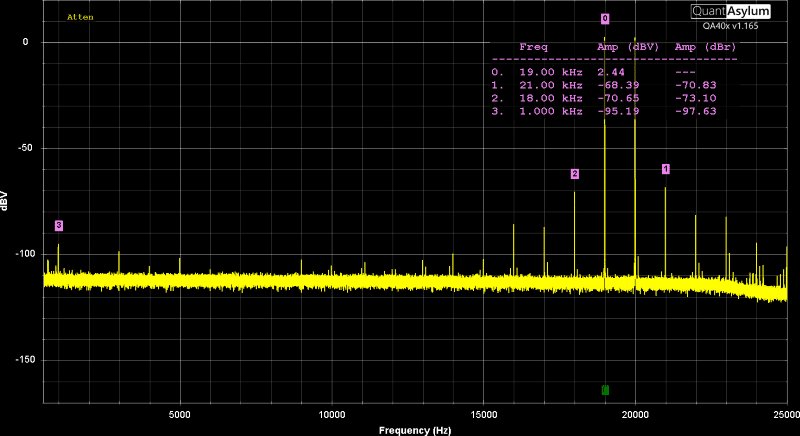
In more than a decade of testing audio products, I have never seen an amplifier with better performance on an intermodulation test. The product (1 kHz) amplitude was at -99.83 dBV relative to the test signal amplitudes. That’s equivalent to 0.00102% distortion. Even the sideband levels were impressive, with the upper sideband at -89.63 dBV relative to the test signal. For your percentage, folks, that’s 0.0033%. What’s even more impressive was that, once again, the amp didn’t fall on its face when driving a 2-ohm load. The numbers are 0.00131% for the product and 0.0287% for the upper sideband. If there’s a factor that correlates to the “tightness” and “clarity” of the amp, it’s this. Absolutely phenomenal!
Finally, it was time to measure the power production capabilities of the Blackbird. I set the amp up with my recently upgraded bank of load resistors, then increased the output until the audio analyzer showed 1% THD+N. My power supply voltages drop under load, which limits maximum output on a loosely regulated amp design like this. That said, the performance will match what you’d see in a vehicle. Where it matters, the amp produced 79 watts per channel into 4 ohms and 126 watts per channel into 2 ohms, with all channels driven at the same level. Efficiency was typical for the ARC Audio amplifiers I tested at 87 and 82%.
I added a second test to each load by attenuating the output of half the channels by 10 dB and measuring the RMS output of the four untouched channels. With less load on the power supply, the output jumped to 86 watts by four into 4 ohms and an impressive 154 watts by four into 2 ohms. If you use half this amplifier and bridge both pairs of channels to a dual 4-ohm voice coil, you’ll have just over 600 watts of power available to drop some beats!
Note that these aren’t dynamic power tests like other companies use. This is continuous power for more than 15 seconds, as described in the CTA-2006-D standard. That’s a LOT of jam!
I spoke with Brad Ott, the president of ARC Audio, about the power production numbers. He mentioned that they had decreased the maximum output capabilities of the amp during the development process. This decision was made to increase reliability. It seems contradictory, but it makes sense when you know that power numbers have no bearing on sound quality. Remember that I said there was something special about this company?
Summary Thoughts on the ARC Audio Blackbird DSP Amplifier
This is a lot of information to absorb, so let’s break it down piece by piece. The latest version of ARC Audio’s DSP software is comprehensive. It’s intuitive to operate, and the inclusion of level meters is a godsend in ensuring that nothing bad happens during the calibration process. I particularly like the precision with which all the settings can be adjusted. It might be more than what’s needed, but that’s better than not having small enough adjustments.
From a design standpoint, the amp is rock solid and easy to install. I prefer RCA jacks on the chassis, but there simply isn’t room. The Blackbird’s extra power over the PS8-50 takes the listening experience from “just loud enough” to “no problem” and gives the amp enough grunt to power a subwoofer with some authority.
Where things really matter is the sound quality. This is the bottom line for me. I had high hopes that the new Blackbird would extend ARC Audio’s reputation for making some of the finest-sounding amplifier solutions in the industry. I wasn’t disappointed. It sounds magnificent in all regards. Long ago, someone described the perfect amplifier as a piece of wire with gain. The Blackbird delivers that level of performance and includes the features your installer needs to make your car’s audio system sound stunning.
Drop by a local authorized ARC Audio retailer today to audition the Blackbird. You can find a retailer using the locator on their website. Be sure to follow ARC Audio on Facebook, Instagram and YouTube to learn more about their amazing car, motorcycle and powersports solutions.

